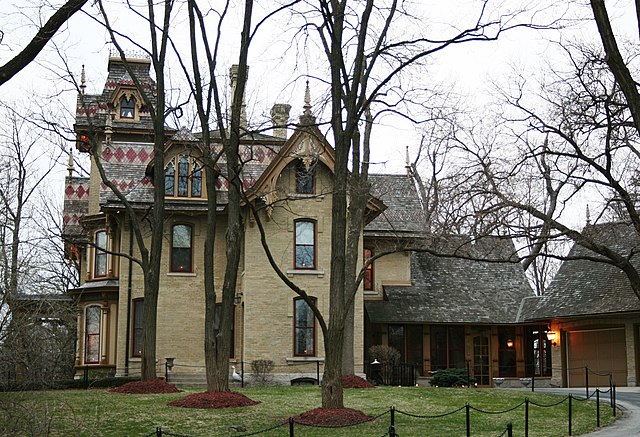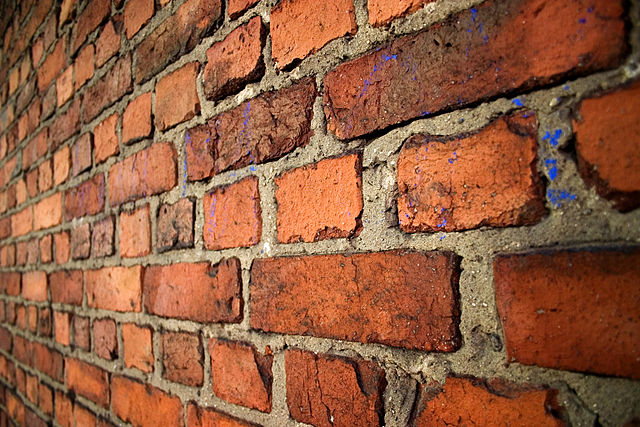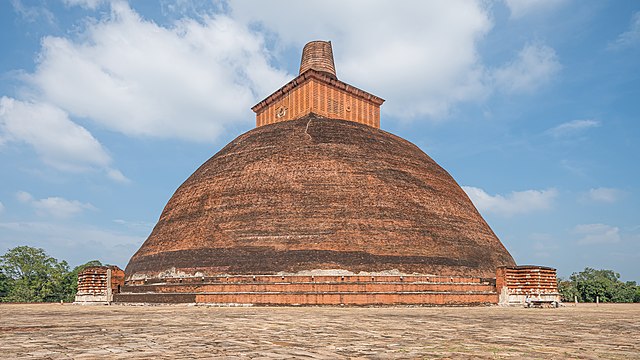Cream City brick is a cream or light yellow-colored brick made from a clay found around Milwaukee, Wisconsin, in the Menomonee River Valley and on the western banks of Lake Michigan. These bricks were one of the most common building materials used in Milwaukee during the mid and late 19th century, giving the city the nickname "Cream City" and the bricks the name "Cream City bricks".
Dr. Fisk Holbrook Day House, located in Wauwatosa, Wisconsin, shows the restored color of Cream City brick.
Cottage in Racine, Wisconsin, 1910
Trinity Evangelical Lutheran Church, located in Milwaukee, Wisconsin, is an example of a building constructed with Cream City brick, though its cream color has been darkened by the elements.
Valentin Blatz Brewing Company Office Building.
A brick is a type of construction material used to build walls, pavements and other elements in masonry construction. Properly, the term brick denotes a unit primarily composed of clay, but is now also used informally to denote units made of other materials or other chemically cured construction blocks. Bricks can be joined using mortar, adhesives or by interlocking. Bricks are usually produced at brickworks in numerous classes, types, materials, and sizes which vary with region, and are produced in bulk quantities.
A single brick.
A wall constructed in glazed-headed Flemish bond with bricks of various shades and lengths.
An old brick wall in English bond laid with alternating courses of headers and stretchers.
The ancient Jetavanaramaya stupa of Anuradhapura in Sri Lanka is one of the largest brick structures in the world.








